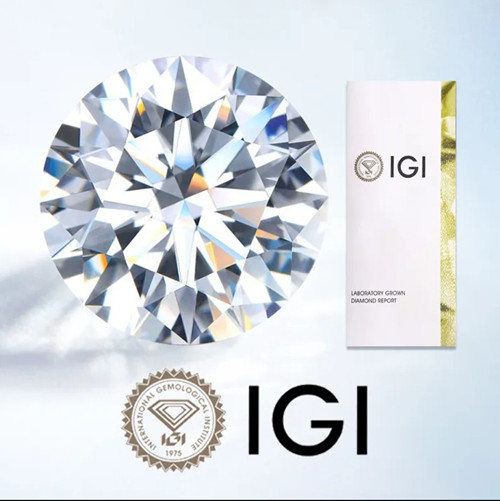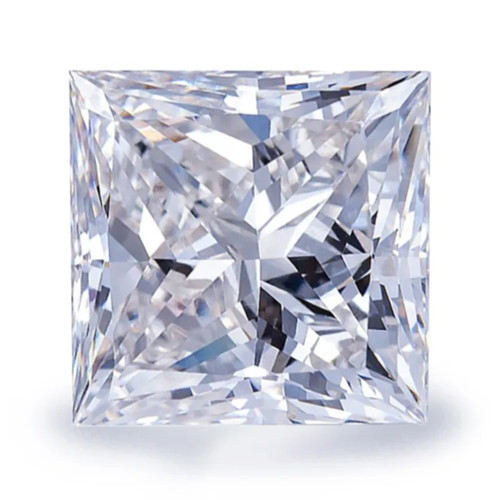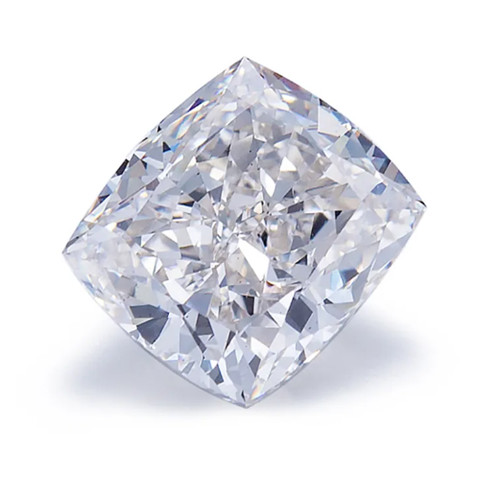Detailed Guide on lab grown diamond Shapes
Lab grown diamonds, the marvels of modern technology, are increasingly embraced by consumers. Like natural diamonds, lab grown diamonds can be cut into various shapes to meet different aesthetic preferences and occasions.
In this article, we will delve into the history and characteristics of the major diamond shapes: Round Brilliant, Princess Cut, Cushion Cut, Radiant Cut, Emerald Cut, and Asscher Cut, and provide tips on distinguishing similar shapes.
1. Round Brilliant Cut
The Round Brilliant Cut is the most classic and popular diamond cut. Its history dates back to the 17th century, evolving over centuries until Marcel Tolkowsky designed the ideal Round Brilliant Cut in 1919.
This cut features 58 facets (including the culet) that maximize the diamond’s brilliance, making it the most dazzling with superior fire and brightness.
Tips: The Round Lab grown diamond is easily recognizable by its symmetrical round shape and facets that radiate intense light from any angle.

2. Princess Cut
The Princess Cut emerged in the 1960s as a modern addition to diamond cuts. It is characterized by its square or rectangular shape with typically 57 or 58 facets. The Princess Cut lab diamond is highly popular due to its brilliance and fire, while also being more efficient in retaining the rough diamond's weight, offering excellent value.
Tips: Princess Cut diamonds can be identified by their square or rectangular shape with pointed corners and facet arrangement.

3. Cushion Cut
The Cushion lab diamond, also known as the Old Mine Cut, has a history spanning over two centuries.
It combines the features of round and square shapes, resulting in a soft and elegant appearance. Cushion Cut diamonds have approximately 58 facets, and their shape is either square or rectangular with rounded corners.
Tips: Cushion Cut diamonds are easy to recognize due to their rounded corners and larger facets, differentiating them from Princess and Radiant Cuts.

4. Radiant Cut
The Radiant Cut was invented by Henry Grossbard in 1977 and was the first cut to combine the elements of the Round Brilliant and Step Cut. Radiant Cut diamonds feature 70 facets, exhibiting exceptional fire and brilliance along with the depth and luster of a Step Cut.
Tips: Radiant Cut diamonds have slightly rounded corners and more facets, making them easily distinguishable from Cushion and Emerald Cuts.

5. Emerald Cut
The Emerald lab diamond was originally used for emeralds and later applied to diamonds, with its history tracing back to ancient Egypt.This cut features rectangular step-cut facets and a large open table, usually with 57 or 58 facets.
Although it doesn’t possess the same level of fire as the Round or Princess Cuts, its elegant lines and unique brilliance are highly admired.
Tips: The rectangular shape and large open table of the Emerald Cut make it easy to identify. Look for the step-cut facets and trimmed corners.
6. Asscher Cut
The Asscher Cut was invented by the Asscher brothers in the Netherlands in 1902, and it exudes a distinct vintage charm.
Similar to the Emerald Cut, the Asscher lab diamond has more symmetrical proportions, closer to a square shape, with a higher crown and deeper pavilion, typically featuring 58 facets.
Tips: The Asscher Cut’s square shape and high symmetry are its defining features. Observing the step-cut facets and octagonal outline can easily distinguish it from other similar shapes.
When choosing a lab grown diamond, understanding the history and characteristics of different cuts, as well as how to distinguish similar shapes, will help you make an informed decision.
Whether it's the classic Round Brilliant Cut, the modern Princess Cut, or the vintage Asscher Cut, each shape has its unique charm and value. We hope this article provides you with valuable information to help you find your ideal lab grown diamond.

Terms & Policies
Tel.: +86 15878079646
Email: info@messijewelry.com
WhatsApp:+86 15878079646
Company Address: Room B5, B6, B7, B8, Building 2, No. 137, Xinxing 2nd Road, Wuzhou, GuangXi, China.
One of the experienced lab grown diamond manufacturers, Messi Jewelry is always working for your satisfaction, welcome to negotiate business cooperation with us.




































